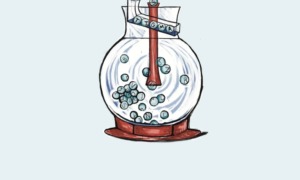 Adolescence is a developmental period of growth and great potential, but it is also a time of risk-taking and experimentation — including the use of alcohol and other drugs (AOD). While AOD use is a normative behavior among American teenagers, and in many ways a rite of passage to adulthood, not all youth emerge from experimentation unharmed.
Adolescence is a developmental period of growth and great potential, but it is also a time of risk-taking and experimentation — including the use of alcohol and other drugs (AOD). While AOD use is a normative behavior among American teenagers, and in many ways a rite of passage to adulthood, not all youth emerge from experimentation unharmed.
Currently 1.7 million youth in this country are struggling with a diagnosable substance use disorder. At no other time in an individual’s development are the stakes of drug experimentation so high: Adolescence is the at-risk period for developing a substance use disorder.
Youth are five times more likely to develop a substance use disorder compared to adults. This disease can (and frequently does) follow them for life. More than 90 percent of adults suffering from addiction developed the problem between the ages of 12 and 20.
In other words, only about 10 percent of substance dependence cases occur after adolescence. Thus, successful efforts to prevent, delay or minimize substance use during adolescence will clearly be the most enduring way to reduce the many public health, safety and economic threats associated with AOD abuse and dependence.
There is a price to pay for not providing effective preventive care or for not intervening early: an inevitable increase in the need for addiction treatment and an inescapable solidification of a pipeline to adult treatment services. Today, the number of youth in need of varying levels of treatment is staggering. Yet, in many ways, the American substance abuse treatment system for adolescents is antiquated, as it has not kept pace with numerous scientific advances.
Research has clearly demonstrated that substance use disorders are chronic medical illnesses, with biological, social and behavioral components. And like other chronic illnesses, substance use disorders are best managed with an appropriate combination of clinically proven approaches that include prevention, early intervention, treatment and continuing care.
Type 2 diabetes provides an apt comparison with addiction: Genetic heritability imparts underlying risk, but the disease is fundamentally an acquired, progressive illness that develops when efforts at self-management of critical health behaviors cannot overcome genetic and environmental vulnerabilities. Because diabetes is unambiguously an illness with a long history of clinical research and chronic care, we believe it can serve as an illustrative framework for what is necessary — and what is now possible — for reducing the burden of substance use disorders in this country.
[Related: Talking to a Doctor about Substance Use]
Nationally, we have made significant strides in the prevention and management of Type 2 diabetes through coordinated efforts to educate physicians, individuals and families about the importance of early identification of symptoms and long-term disease management. Recent proactive, multifaceted efforts to reduce the rates of childhood obesity, a primary factor in the development of Type 2 diabetes and other major health complications, have provided a roadmap for what is possible in substance abuse prevention. Multifaceted initiatives, across multiple sectors, have rapidly lessened a rising epidemic of childhood obesity.
We are already seeing the impact of these initiatives to reduce childhood obesity — and will continue to see that the pipeline to Type 2 diabetes will grow narrower as the rates of obesity decline. This approach to preventing and/or intervening early in the course of the illness provides an apt analogy for what could and should be done for adolescents with emerging substance use problems. And the management of patients who develop Type 2 diabetes, through the integration of lifestyle modifications and, as necessary, medications to try to treat the illness before it progresses to a more dangerous level, is a model for the treatment of substance use disorders.
Patients who develop Type 2 diabetes are not just managed within the hospital or medical clinic setting, and their care is not time limited, as it so often is in the case of patients’ substance use disorders. Diabetes is now considered best treated proactively by multidisciplinary teams of health care professionals who no longer simply treat the results of a relapse in a hospital setting, but instead proactively monitor and manage early signs of relapse through clinical contacts and family supports. The recognized goal of care is stable self-management. The role of all medications, interventions and education is to prepare patients and their families to actively and regularly manage their illness.
It should be clear that although there are important differences in the nature and manifestation of diabetes and substance use disorders, there are many similarities in the genetic and behavioral factors associated with the onset, course, management and monitoring of these two chronic illnesses. The coordinated and multisector commitment to reducing childhood obesity and in treating Type 2 diabetes shines light on what is possible — and what must be done — to reduce adolescent substance abuse, to change the trajectory of young lives and to reduce the burden of adult addiction.
Kathleen Meyers, Ph.D., is a senior investigator with the Treatment Research Institute and a recognized leader in the assessment and treatment of adolescent substance use disorders, delinquency and co-morbidity. Meyers is the author of the “Comprehensive Adolescent Severity Inventory,” a multidimensional assessment instrument for youth with co-morbidity.
More related articles:
The Most Effective Prevention for Teen Substance Use Not Widely Deployed: Report
Engaging Kids Fights Substance Abuse, Organizations Say
Foster Care System Feels Shock Waves from Heroin Addiction






























